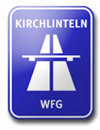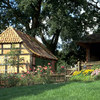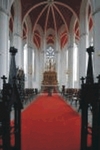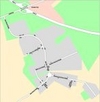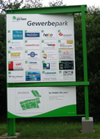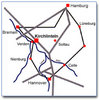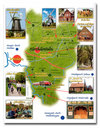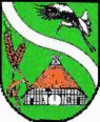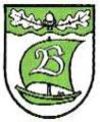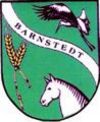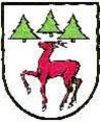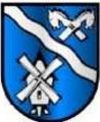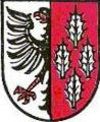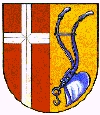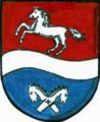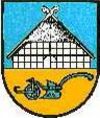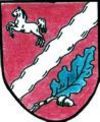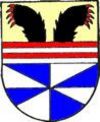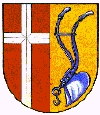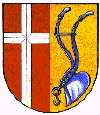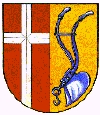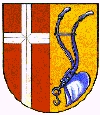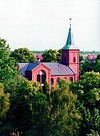Village Westen

Coat-of-arms: The emblem consists of the former 'Ambtes Westen's' seal, which existed in the years 1679 to 1859. In the upper part of the tripartite emblem there are two turned away black bear paws on golden ground, which refer to the coat-of-arms of the earl of Hoya. In the middle there are two red-silver beams, which can also be found in coat-of-arms of old Bruchhausen. Below a blue and silver raised cross points to the clerical tradition from the 15th-century. The bishops converted the old chapel from the time around 1200 to a church, which they called St. Annen and where the first Protestant church service took place in 1568.
This coat-of-arms wasn't carried by the former community Westen.
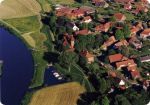
Associating villages:
- Hiddinghausen
- Nocke
Infrastructure through Kreisstraße (district road) 14 (Wahnebergen - Rethem) and Kreisstraße 15 (from direction Dörverden).
In the village centre, former 'Amtshaus', church with Romanesque rotunda tower, harbour, agriculture-commercial character, at the village fringe residential areas with detached houses.
Some typically Lower Saxon farmhouses with 'Grootdör and Peerköppe'.
The village centre developed its typical villagescape in the time of the Amt Westen from 1679 to 1859.
Interesting:
- Amtshaus Westen
- church ('St. Annen') with Romanesque rotunda tower
- reopened ferry between Westen and Otersen (ferry 'Marie Hoffmann'), operated from May to October.
- renovated 'Buseman's mill' village exit Hülsen
- Aller-bicycle-trail Verden (via Wahnebergen, Westen, Hülsen) - Rethem - Kirchlinteln - Verden.
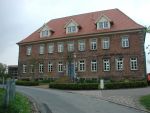
History:
1055 mention of an estate Westen as 'Wensten, Wasten or Westenem'
Around 1200 building of castle Westen (the church's rotunda tower stems from this time).
Later construction of church from castle's remains.
1219 - 1679 Stifthof Westen
1575 setup of Sneden-stones (border between monastery Verden, the earldom of Hoya and duchy Lüneburg).
1679 Amt Westen with bailiwicks in Dörverden and Hutbergen. (Westen's most interesting time in history)
1761/62 construction of Amtshaus Westen in the middle of the 7-Year War (which brought great suffering for the population)
1815 construction of smock mill at the edge of the Hämelheide
1859 dissolving of Amt Westen and task transfer to the rural district Verden and judicial authorities in Verden, estates belonging to the Amt become domain property and are leased out.
1894 construction of Busemann's mill and discontinuing of the mill in the Hämleheide.
1905 opening of railway line Verden - Schwarmstedt with station in Westen
1911 positive impacts of citizens' prosperity through the building of potash facilities and potash winning in Hülsen (at times up to 650 employees).
1926 suspension of potash mining in Hülsen and great redundancies also in Westen.
1965 inauguration of a 10-class centre school (with break hall, specialist rooms and training kitchen and gymnasium) together with the community Hülsen, rural district Fallingbostel (exemplary, due to district comprehensive cooperation).
1966 closure of railway station for passenger traffic, only freight service.
1972 Westen gives up independence, nationwide local government reform, integration to community Dörverden through state law.
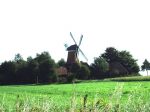
1973 inauguration of new kindergarten for Westen and Hülsen next to the centre point school.
1990ties ceasing of rail freight service on the line Rethem-Wahnebergen and removal of tracks.
1995 founding of local club Westen with Heimatstube in the Amtshaus and exhibitions.
1996 reopening of passenger ferry between Westen and Otersen. Ferry 'Marie Hoffmann' become great attraction with 8000 ferry passengers in the first ferry season.

 Deutsch
Deutsch Nederlands
Nederlands Dansk
Dansk Österreichisch
Österreichisch Po Polsku
Po Polsku





